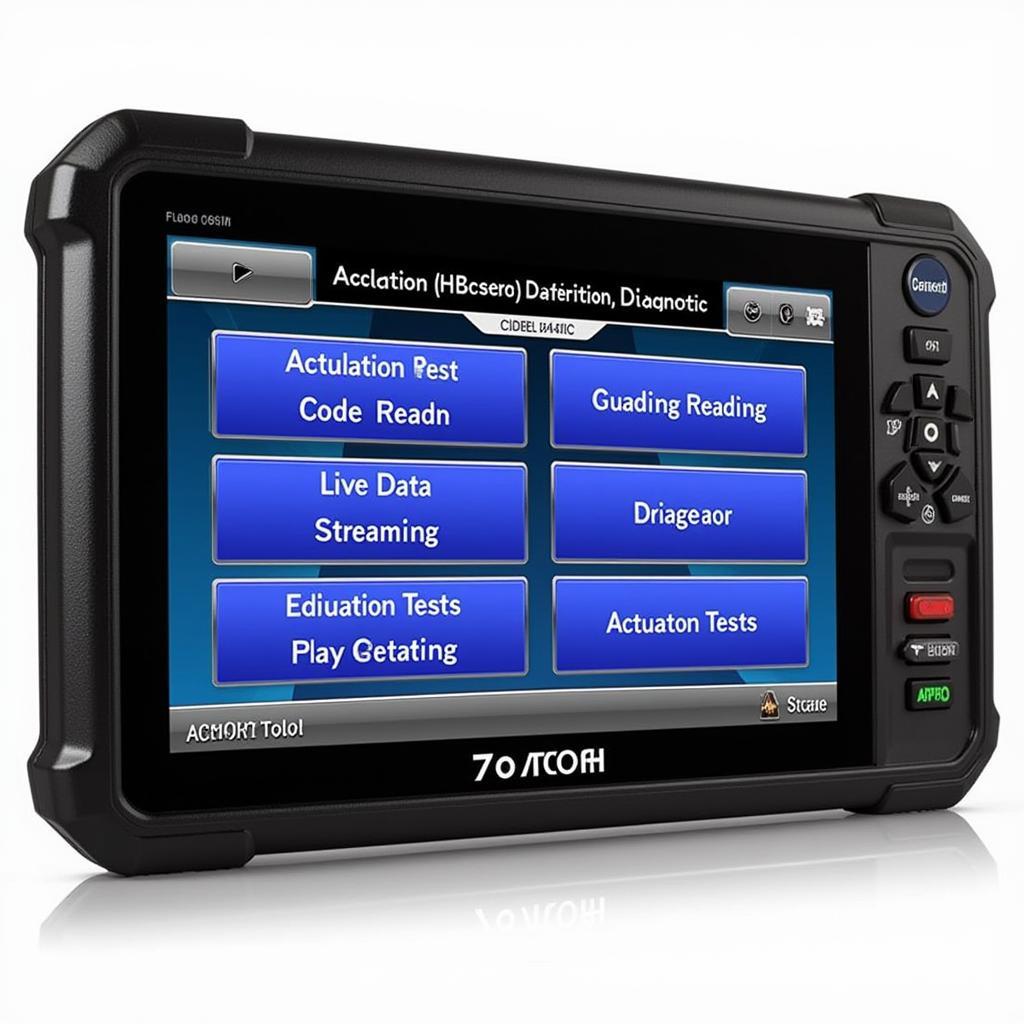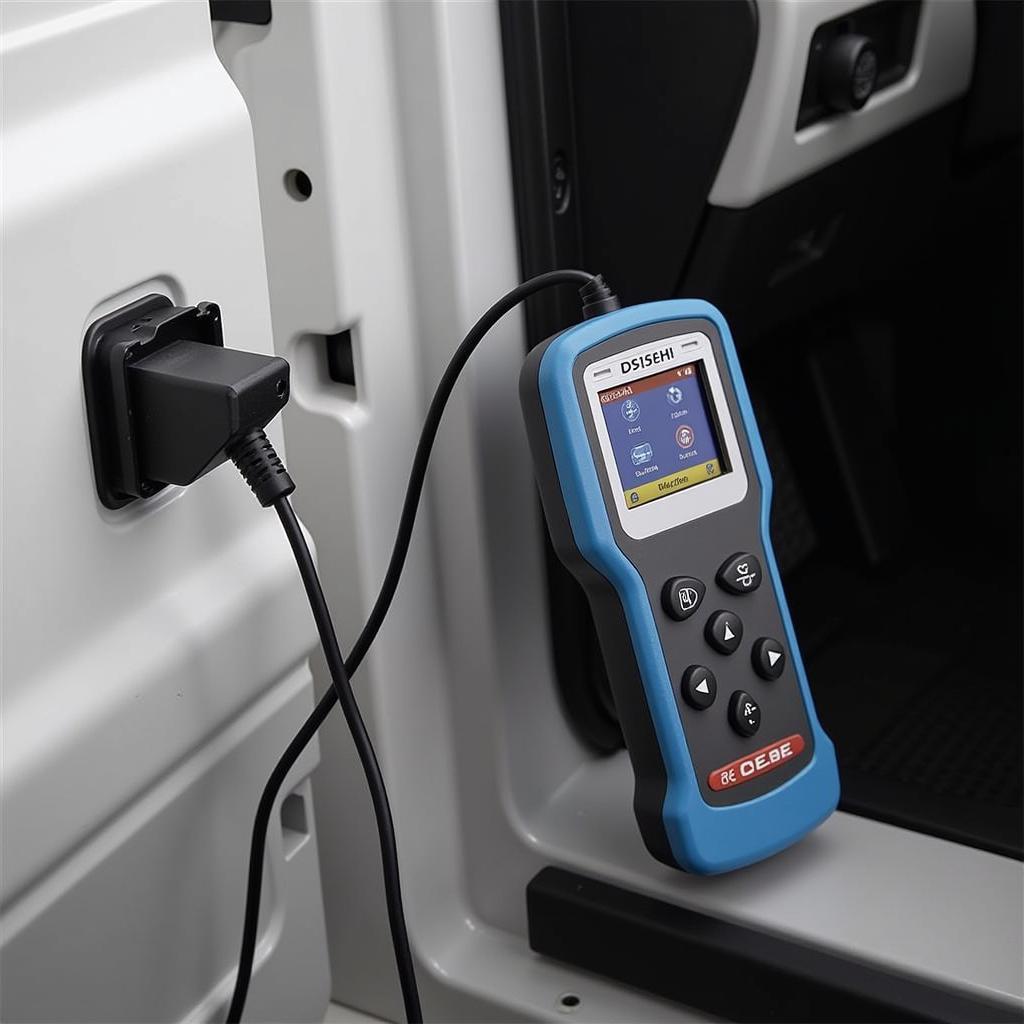A digital CAN OBD2 diagnostic tool is an essential device for any car owner, mechanic, or automotive enthusiast. This tool allows you to communicate with your vehicle’s onboard computer, retrieve diagnostic trouble codes (DTCs), and monitor various vehicle parameters. By understanding how to use this powerful tool effectively, you can diagnose and fix car problems, saving time and money on costly repairs.
Understanding OBD2 and CAN
Before diving into using the diagnostic tool, it’s essential to understand the basics of OBD2 and CAN.
OBD2, or On-Board Diagnostics II, is a standardized system that allows external devices to access your vehicle’s diagnostic information. Most cars manufactured after 1996 are equipped with an OBD2 port, typically located under the dashboard on the driver’s side.
CAN, or Controller Area Network, is a communication protocol used in vehicles to allow different electronic modules to communicate with each other. This network enables the diagnostic tool to access data from various systems, including the engine, transmission, airbags, and ABS.
Choosing the Right Diagnostic Tool
Selecting the appropriate digital CAN OBD2 diagnostic tool depends on your needs and budget.
For basic code reading and clearing, an affordable vehicle diagnostic tool online might suffice. These tools connect to your smartphone or tablet via Bluetooth, providing a user-friendly interface for viewing DTCs and basic vehicle information.
Professional mechanics or advanced DIYers might opt for a dedicated diagnostic scan tool nz with more advanced features. These tools typically have a larger screen, more extensive code libraries, and additional functionalities like live data streaming, bi-directional controls, and special functions for specific vehicle makes and models.
Connecting the Tool and Reading Codes
Connecting the diagnostic tool is a straightforward process:
- Locate the OBD2 port on your vehicle.
- Turn the ignition to the “on” position without starting the engine.
- Plug the diagnostic tool into the OBD2 port.
- Power on the tool and wait for it to establish communication with the vehicle.
Once connected, you can access various functions, with reading DTCs being the most common. The tool will display a list of codes, each representing a specific fault within a vehicle system.
Interpreting Diagnostic Trouble Codes
DTCs are alphanumeric codes that provide clues about potential problems. They typically consist of a letter and four numbers.
For instance, a code like “P0301” indicates a misfire in cylinder 1. However, it’s crucial to remember that DTCs are starting points for diagnosis, not definitive answers.
“Don’t jump to conclusions based solely on DTCs,” advises John Miller, a seasoned automotive engineer. “These codes point you in the right direction but always refer to your vehicle’s service manual and conduct further inspections to pinpoint the root cause.”
Clearing Codes and Verifying Repairs
After addressing the underlying issue, you can use the diagnostic tool to clear the DTCs. However, simply erasing the codes without proper repair will only provide a temporary solution.
Always verify your repairs by driving the vehicle and monitoring for any recurring symptoms or DTCs. This ensures you’ve successfully resolved the issue.
Beyond Basic Code Reading
Digital CAN OBD2 diagnostic tools offer much more than just reading and clearing codes.
Android phone diagnostic tool app and dedicated scanners can provide live data streaming, allowing you to monitor various engine parameters such as RPM, coolant temperature, oxygen sensor readings, and more. This real-time data is invaluable for diagnosing intermittent issues, monitoring sensor performance, and fine-tuning vehicle modifications.
Furthermore, some tools offer bi-directional controls, enabling you to activate specific components like fuel injectors, solenoids, or relays. This functionality is beneficial for testing component operation and troubleshooting electrical issues.
Choosing the Right Tool for You
Selecting the ideal digital CAN OBD2 diagnostic tool depends on your specific needs:
- Car Owners: A basic Bluetooth scanner paired with a smartphone app is often sufficient for reading and clearing codes, checking engine parameters, and monitoring fuel economy.
- DIY Enthusiasts: A mid-range dedicated scanner with live data, bi-directional controls, and some special functions offers greater diagnostic capabilities for tackling various repairs.
- Professional Mechanics: A high-end scan tool with extensive code libraries, advanced functionalities, and manufacturer-specific coverage is crucial for comprehensive diagnostics and complex repairs.
Conclusion
Mastering the use of a digital CAN OBD2 diagnostic tool empowers you to take control of your vehicle’s health. This invaluable tool allows you to diagnose issues accurately, monitor vital systems, and ensure your car runs smoothly for years to come. Remember to invest in a tool that aligns with your needs and always refer to your vehicle’s service manual for accurate diagnosis and repair procedures.
For expert advice and top-quality diagnostic tools, contact ScanToolUS at +1 (641) 206-8880 or visit our office at 1615 S Laramie Ave, Cicero, IL 60804, USA.


